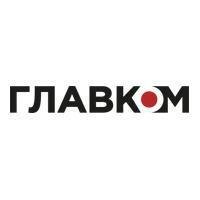Tanks, jets, long-range missiles and now cluster munitions. There’s a growing list of weapons requested by Ukraine that the United States initially denied but then approved sending anyway.
Despite much of the high-tech weaponry and electronic warfare in use in Ukraine, the frontlines look more like something from World War I, just with better guns. Artillery is still the deciding factor in most battlefield engagements, which Russia has more of while Ukraine is running out of ammunition.
To make up for the deficit, the latest $800 million weapons package from the U.S. to Ukraine will include controversial cluster munition artillery shells to be fired from 155 mm Howitzer cannons.
Officially known as dual purpose improved conventional munitions; they’re designed to increase the kill zone of a single projectile. They are packed with bomblets that disperse while the shell is still in the air.
One DPICM can take out multiple armored vehicles. When it comes to trench warfare, the ability to disperse bomblets from the air above enemy positions is why DPICMs came to be known as “steel rain” during Operation Desert Storm.
Pentagon press secretary Gen. Pat Ryder said the munitions are “clearly a capability that would be useful in any type of offensive operations. I would note that the Russians have already been employing cluster munitions on the battlefield, many which include a very high dud rate reportedly.”
The “dud rate” is the percentage of bomblets that don’t detonate. Even when used in optimal conditions, not every bomblet will explode. Some land in water, or mud or other soft area. Sometimes the unexploded ordinance is found years later and then explodes.
When used in open fields or areas where pinpoint artillery might not be the most effective, however, cluster munitions are the weapon of choice. The U.S. used cluster munitions in every major war since Korea. Even the supreme allied commander of NATO called DPICMs “very effective weapons.”
Be that as it may, more than 120 nations have bans in place on cluster munitions. In the U.S., it’s typically against the law to sell or transfer cluster weapons with a dud rate higher than 1%. The cluster weapons the U.S. wants to send Ukraine has a dud rate between 2-3%. Some watchdog groups said it’s higher.
To get around the law, President Joe Biden will invoke part of the Foreign Assistance Act which allows presidents to send aid and weapons to foreign countries, despite restrictions, so long as the transfer is of vital interest to U.S. national security. Former President Donald Trump waived the same prohibitions in 2021 when he allowed the export of cluster munition technology to South Korea.
The White House has reportedly been mulling the decision to send cluster munitions to Ukraine for some time. The fact the Ukrainians are already using cluster munitions on Ukrainian soil reportedly made the decision easier for the Biden administration.
Human Rights Watch called on Russia and Ukraine to stop using cluster munitions and urged the U.S. not to supply them. The group said that both Russian and Ukrainian forces have used the weapons, which have killed Ukrainian civilians.
Reuters contributed to this report.




































































































![TASS [🇷🇺-affiliated] logo](https://groundnews.b-cdn.net/interests/1c364c1e553231a17f22d4a16db85a51fb715dd3.jpg)


![Russia Today [🇷🇺-affiliated] logo](https://groundnews.b-cdn.net/interests/d3a6b2444d4740f3e75a430e54a0cb4d24ee6cc6.jpg)

































































